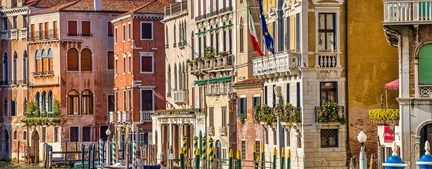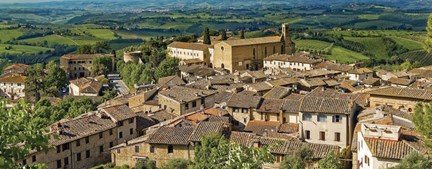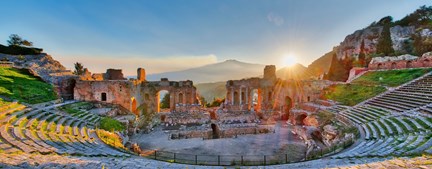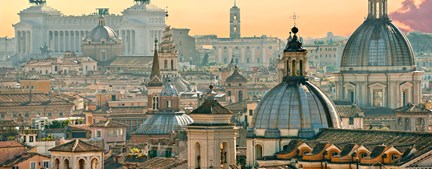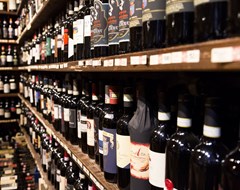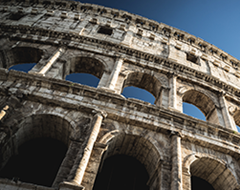How to Order at
A Restaurant in Italy
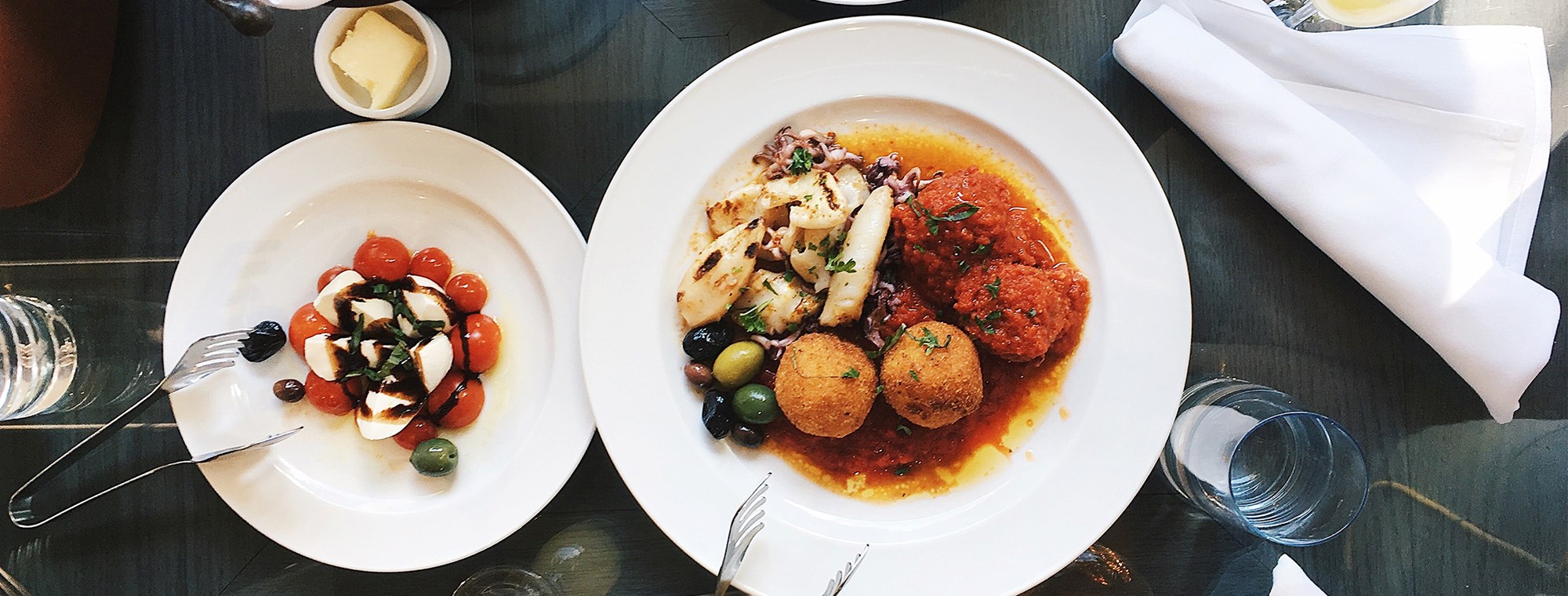
If you’re planning a river cruise of Italy or a tour around the Italian countryside, plan to enjoy delectable native cuisine found all across the country. Menu selections from simple basics like bread and olive oil to exquisitely laid-out entrees, seafood, and multiple-course meals are to be expected, and you’ll note that food and drink changes every time you enter a different province or state. But, some things will remain the same, including how you order food in Italy, and how each course comes to the table, and the high level of service you’ll receive while dining out.
The Italian Menu and Courses
Colazione (breakfast), pranzo (lunch), and cena (dinner), are the main meals in Italy.
The Italian tradition includes options for five different portions of the main meal, including an appetizer (antipasti), first course (primero), second course (secondo), a side dish (contorni), and a dessert (dulce).
Antipasti (appetizers) and carne (meat) are both served at the start of a large lunch or dinner, while dulce (dessert) will usually be some kind of gelato (ice cream), frutta (fruit), or cioccolata (chocolate).
Ordering Breakfast in Italy
For Italians, colazione or breakfast, isn’t exactly the most important meal of the day. Instead, it’s small, simple, and almost always sweet and is just enough to get you going as you move toward lunch — Italy’s main meal of the day. At home, many Italians start their morning with a few cookies (yes, cookies!) accompanied by coffee and milk, while breakfast in a coffee shop typically consists of a brioche pastry (Italy’s croissant) washed down with a steaming hot cappuccino. Add a spremuta or freshly squeezed juice and you’ve got what Italians refer to as a colazione completa.
Here’s a quick language guide to some of the most common breakfast items you’ll find in Italy.
Ordering Coffee & Espresso in Italian
Un caffè
A traditional Italian coffee: a shot of espresso served in a small cup
Un caffè macchiato
A shot of espresso with a dash of foamy milk; similar to a cappuccino, only smaller
Un caffè ristretto
A shot of espresso made with less water, resulting in a stronger flavor profile and less caffeine
Un caffè lungo
A shot of espresso made with more water results in weaker flavor and higher caffeine
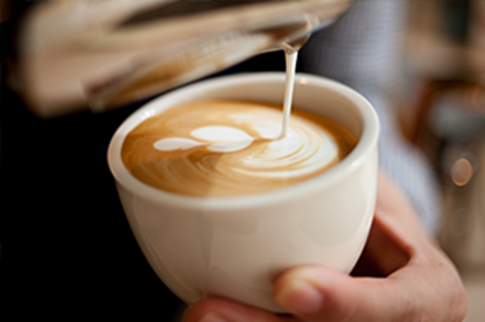
Un caffè corretto
A shot of espresso with a splash of liquor such as grappa or sambuca (You’ll probably want to save this one for after dinner!)
Un cappuccino
An espresso drink served with hot milk and foam.
Ordering Coffee Across Europe
The Italian brioche
The brioche is similar to the French croissant, only slightly softer and made with eggs. In the south, they are called cornetti. You’re sure to find the following varieties in almost any coffee shop:
Una brioche vuota
A plain brioche pastry
Una brioche alla marmellata
A brioche pastry filled with jam
Una brioche alla crema
A brioche pastry filled with cream
Una brioche al cioccolato
A brioche pastry filled with chocolate
Spremuta
Italy’s OJ
Una spremuta
Freshly squeezed fruit juice
Here’s how to would order an easy, Italian breakfast:
"Buongiorno! Vorrei un cappuccino, una brioche alla marmellata e una spremuta per favore."
Good morning! I would like a cappuccino, a brioche pastry with jam and a juice please.

Ordering Lunch & Dinner in Italian
“Prendo un bicchiere di (wine name), per favore.” I’ll take a glass of (wine name), please.
“Ne vorrei un altro tazzo.” I'd like another glass.
“Un piatto di affettati del sud, per favore.” – A plate of cured ham from the south, please.
“Prendiamo una bottiglia di rossa della casa, per favore.” We’ll take a bottle of house red wine, please.
To ask for extra cheese or ask if a dish has cheese in it, ask about formaggio
To order a salad, ask about selections of insalata. For more bread, ask for pane.
If you’re looking for rice, ask for “riso”
For more vegetables or for a side dish of vegetables, ask for “verdura”
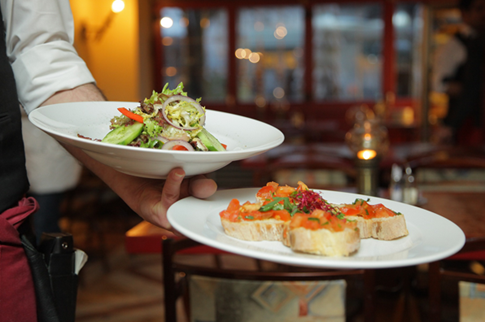
Unlike what you may be used to from dining out in the U.S., meals in Italy are slower-paced, and typically last at least two hours, and at least two and a half hours on Sunday afternoons, which is an ideal day and time to get a feel for authentic Italian culture across the country.
If you noticed a long break between your primero and secondo entrees, that’s because the wait staff is trained to let you enjoy your meal as you dig into your first large portion of the meal.
It’s not uncommon for Americans and other sightseers to fill up on primero and wind up taking the secondo home—but, many restaurants are unfamiliar with “doggie bags” or taking food to go, so they may not have the bags or containers you need, especially in rural and seaside towns.
Plan on eating a big meal by keeping breakfast and snacks light until you go out for dinner or a late lunch, and if you feel you’re getting full, eat sparingly so you get to enjoy all five courses.


